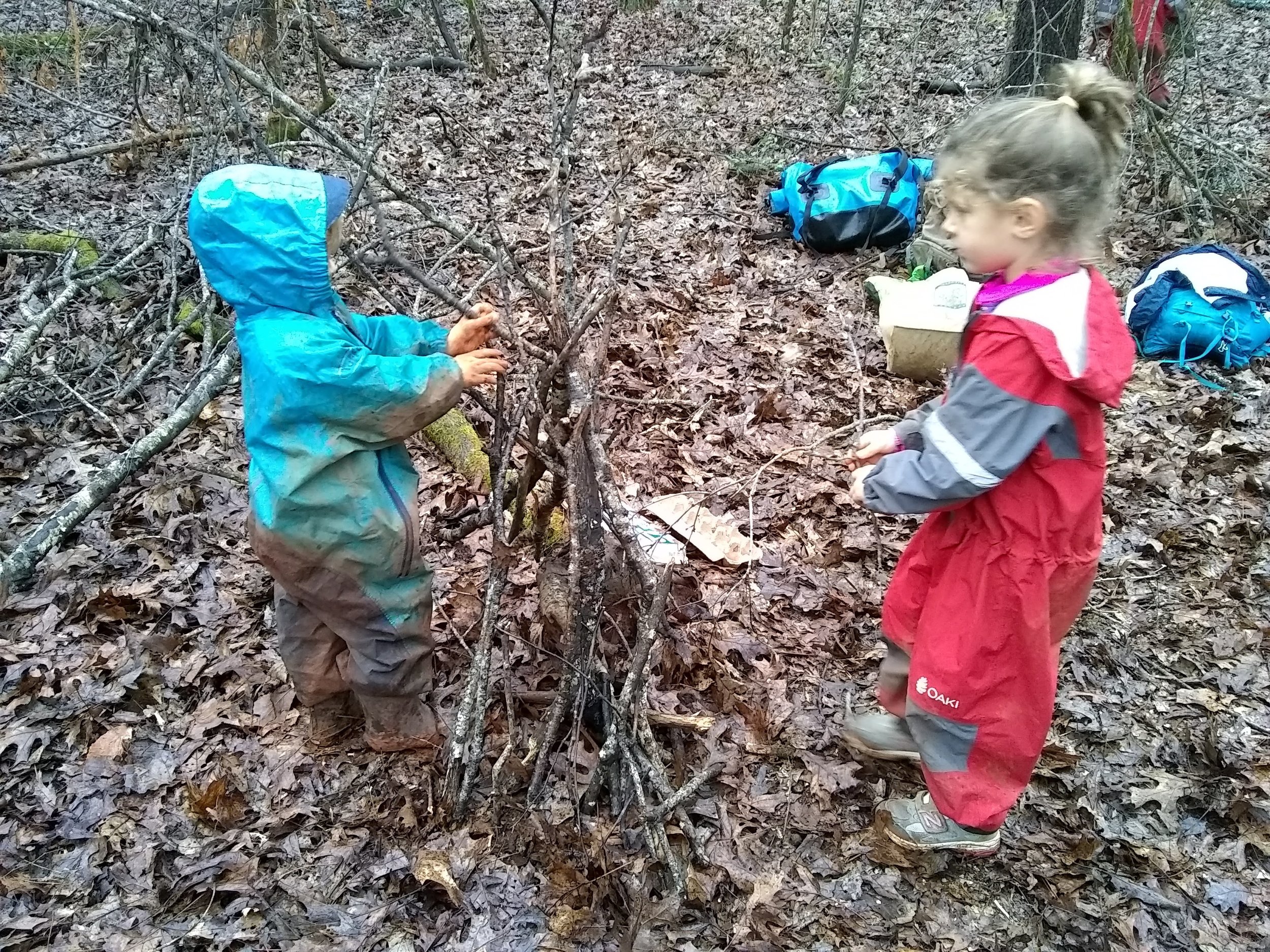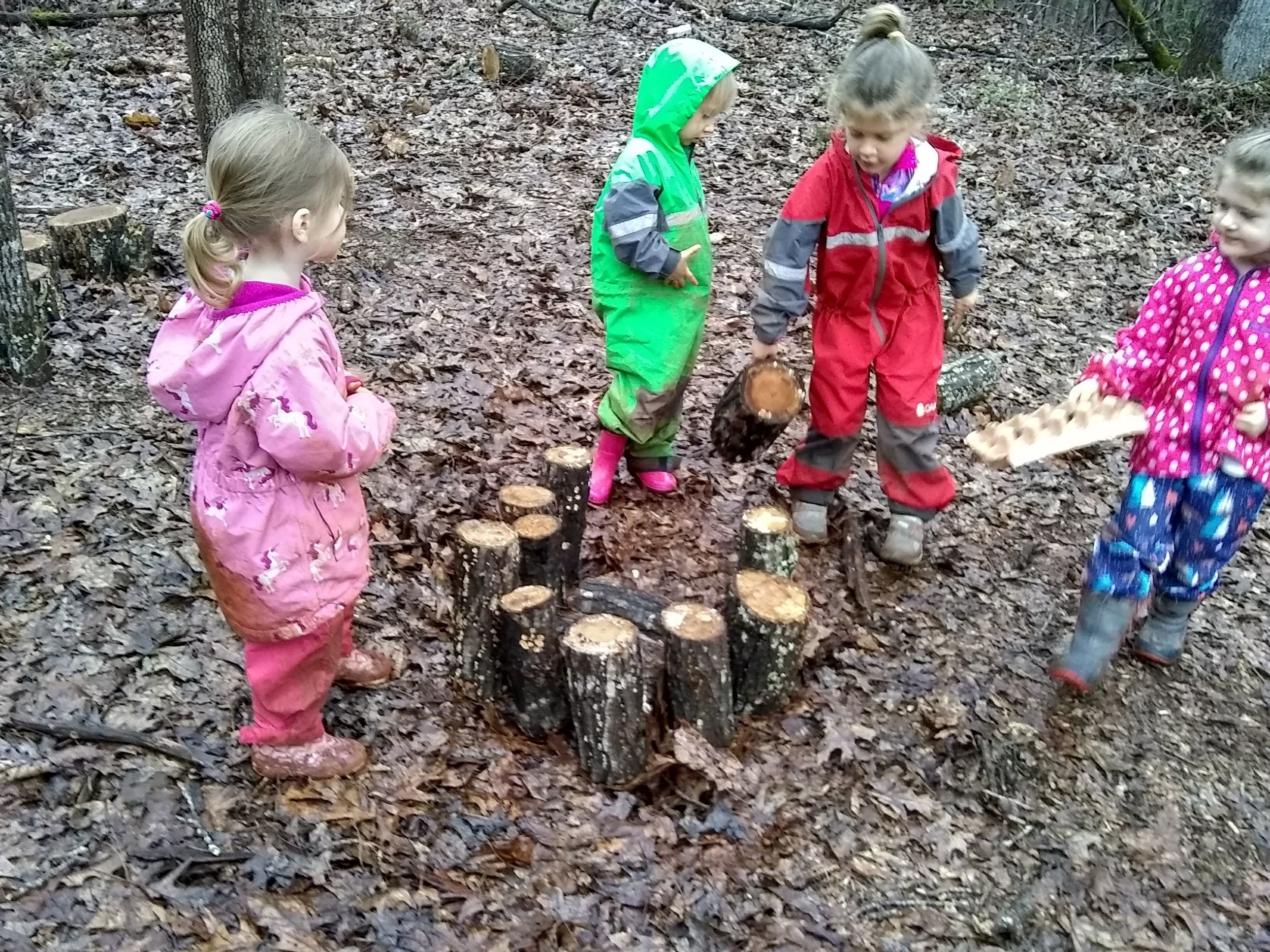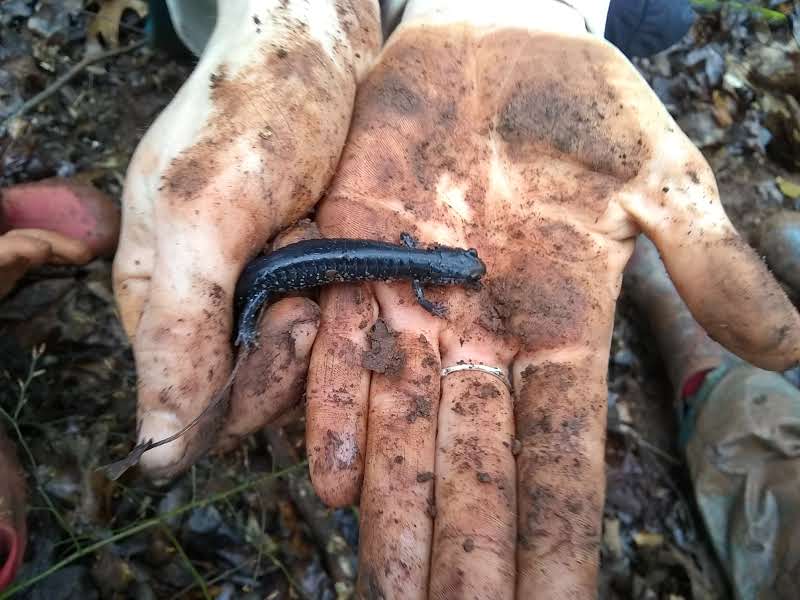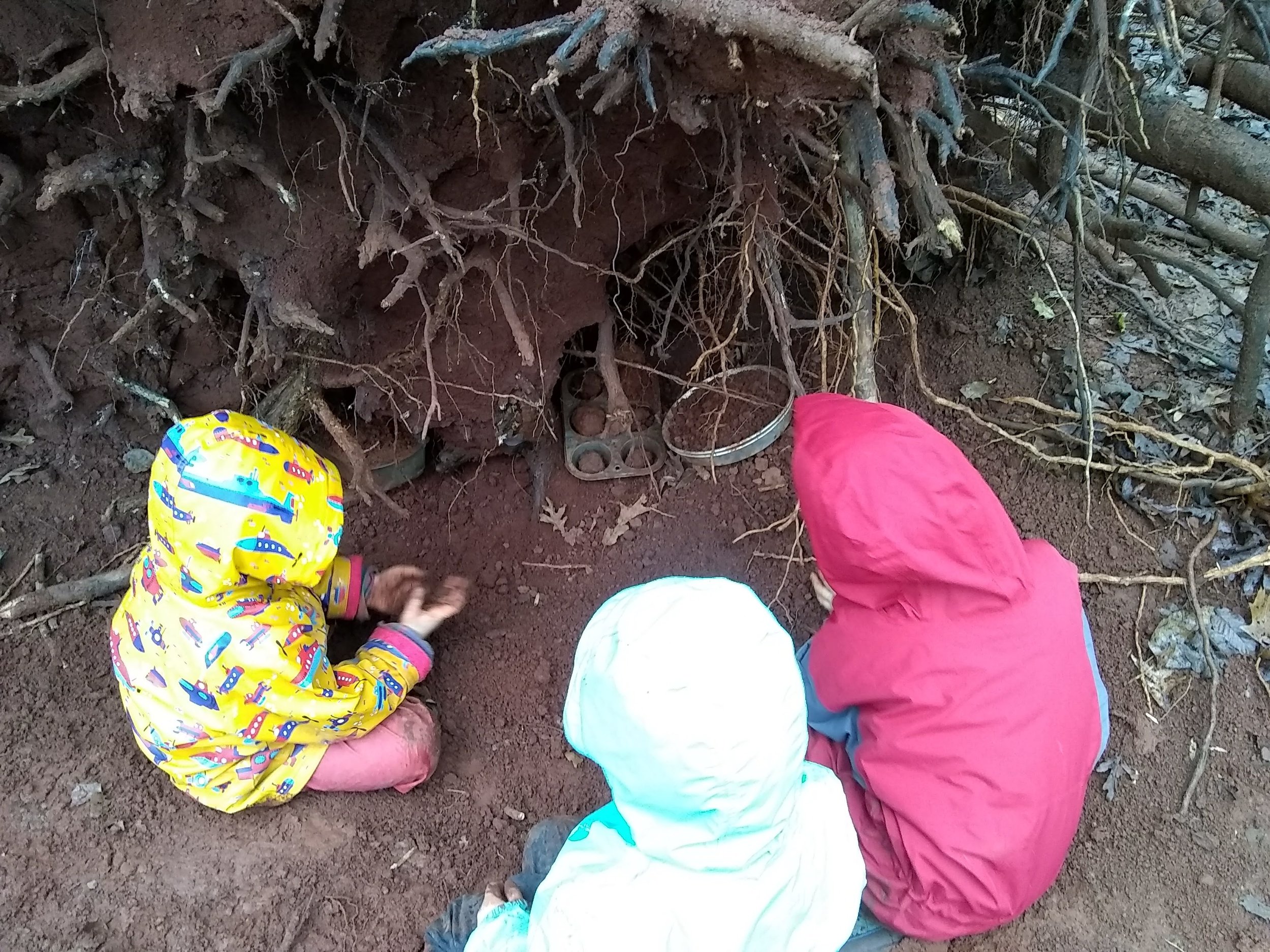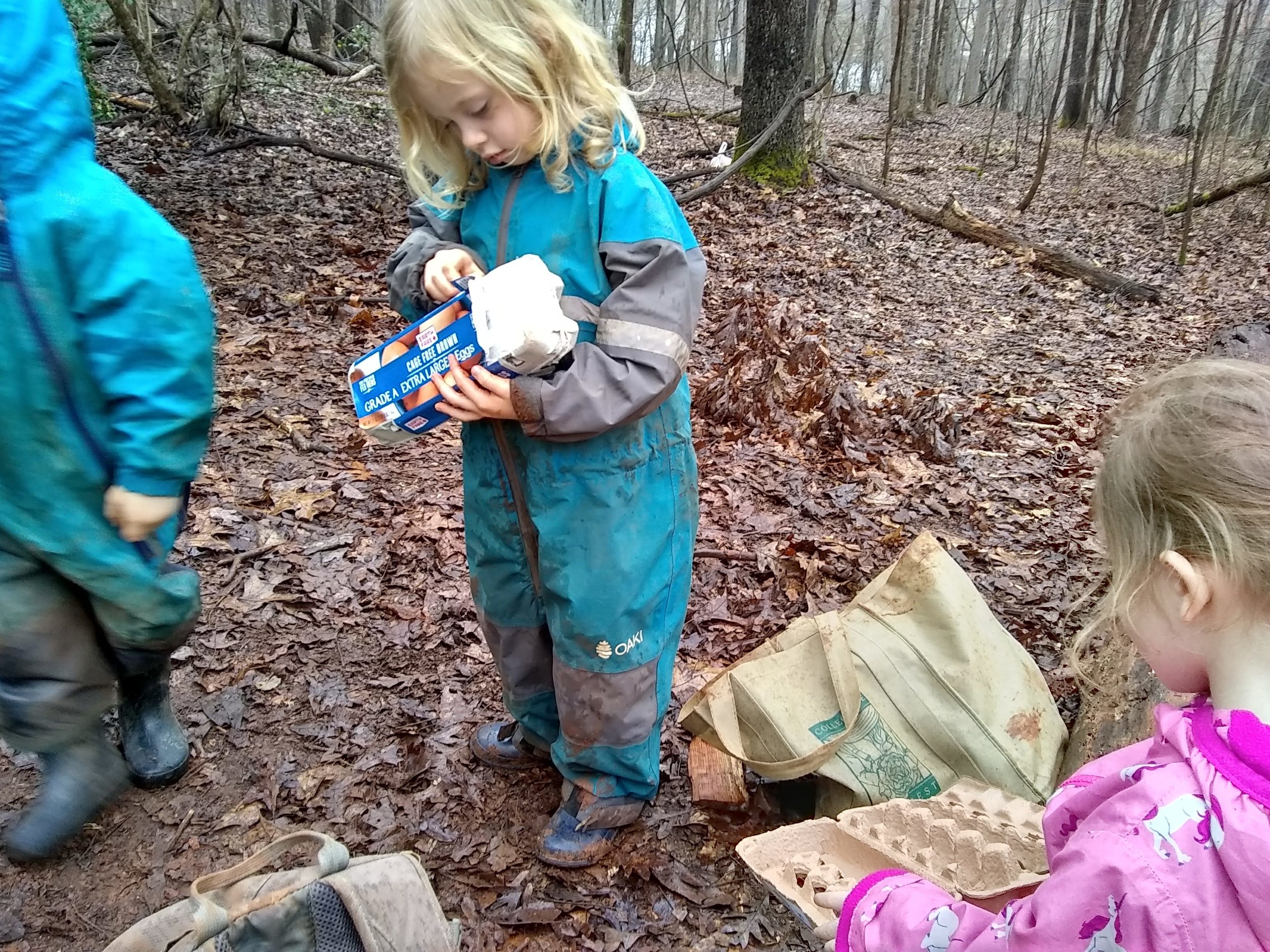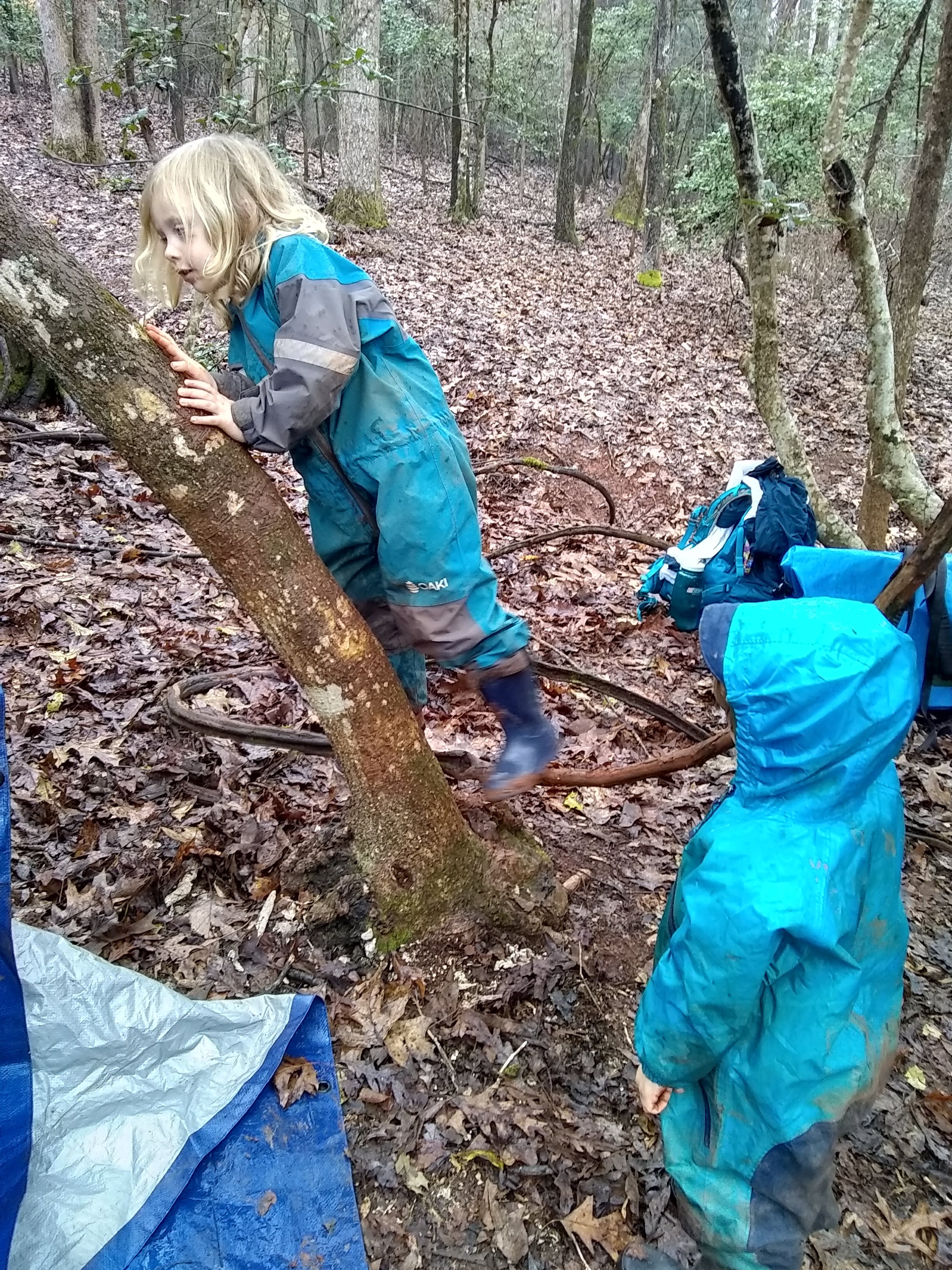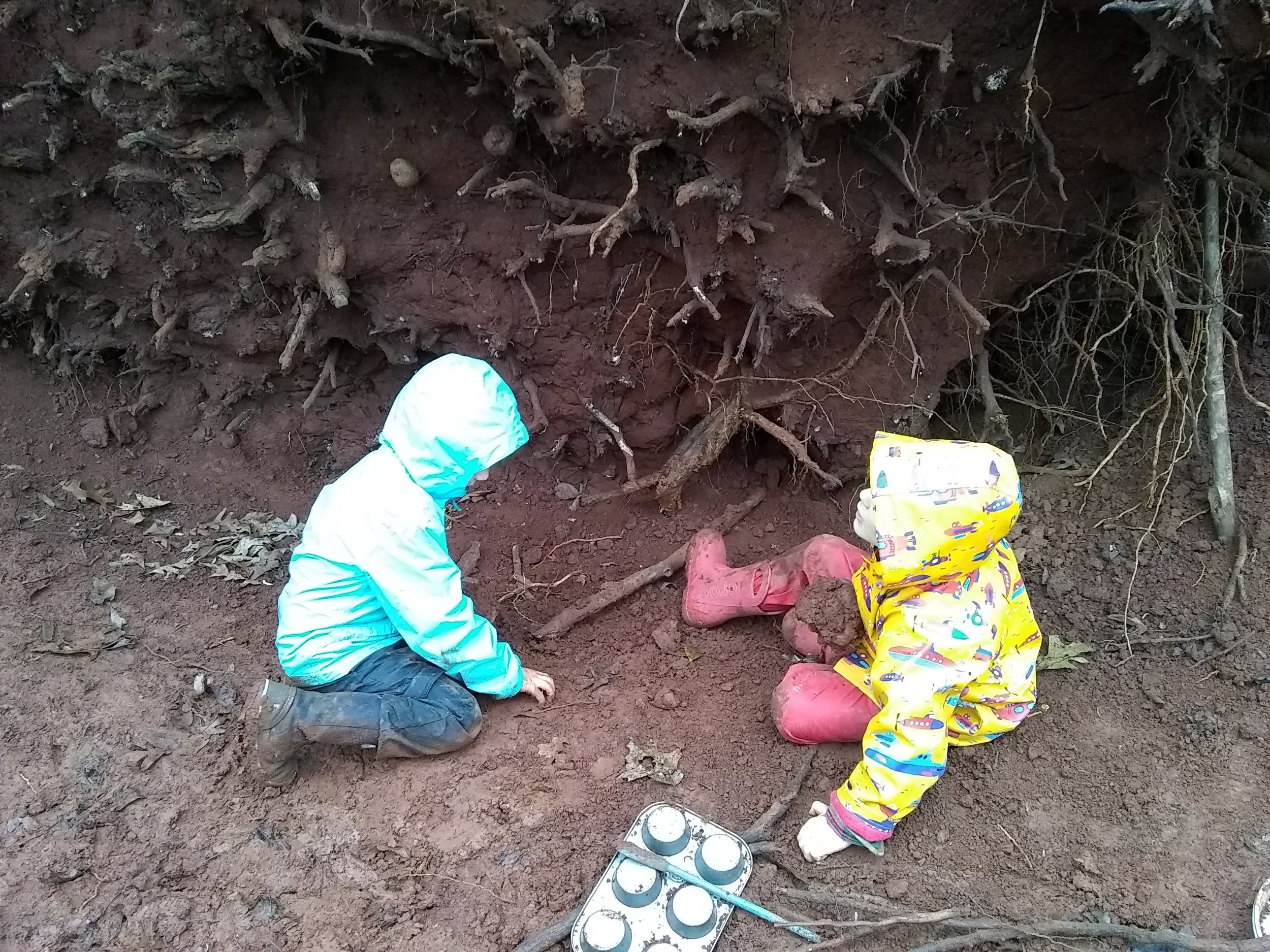In the mornings, we start our day with our welcome song and a morning meeting. Morning meeting is brief, but an important time for our entire group to sit together and discuss matters that are important to our group. It is an opportunity for teachers and children to share words, thoughts and ideas and our morning meeting topic can be prompted by something the children have been talking about by playing or by something the teachers feel is important to discuss, based on their observations of the children at play. It is important for us to hear the children’s words and stories on different topics, and grow an understanding of how they internalize the rules and guiding principles of our group. When we have a discussion like this, the teachers can start to how different children understand the morning meeting topic, and how we can help them as teachers grow to understand it more.
This week, morning meeting was about the word “stop”. We asked the children what they though “stop” meant. The first comments went immediately to where they here the word “stop” the most, when we walk together out to our play site. We often play a game where children can run ahead to a specific spot (like, run ahead to the dandelions and then stop), and when they reach that spot they have to stop or freeze their feet. They might pretend to be a statue and practice being as still as possible until a teacher tells them to go again. When it was really cold outside we pretended to be frozen in a block of ice and they couldn’t unfreeze until a teacher unfroze them. Playing this game gives them an opportunity to move their body the way they need to, some children run very quickly to the next spot while others just walk at the back, but can also draw their attention to landmarks and help them with mapping the space. Learning how to self-regulate and stop their body, even when they want to keep running, is also an important skill to acquire. Several children showed that they understand when a teacher says “Stop” during this game, they are supposed to stop moving and not run, walk or any other motion. But the teachers wondered if we ever use “stop” for other things.
One area we want children to understand is that if another child says “Stop” when they are playing, they need to stop the play. This sometimes happens when two or more children are playing a game of chase. The children being chased might start saying “stop”, but still get chased. We want the children to understand that when they use the word “Stop”, it really means “Stop” and that they do not like the play and they want the play to end. We discussed using a strong voice to say “stop” and that if a friend says “Stop” we should stop our play. We also talked about how the teachers are there to help, and if you say “Stop” to another child but what you don’t like continues, you can get a teacher to help. Some children gave examples of things they don’t like, like being pushed, and we discussed how we can tell a friend to “Stop. I don’t like being pushed, it hurts my body.” to help another friend understand what is wrong about the play. We also practiced saying the word “Stop” with a strong voice, and the teachers are carefully observing to see when children need help to play together and enjoy the play together.
Having discussions like this is all about getting to know one another. Seeing what the children play in the forest is another way to get to know each other. This week, there were several new play themes that emerged that gave us more information about the children and their interests. The first was our mud kitchen being used by a new group of children in a new way. Up to this point, it has been used on occasion to make a few muffins or mud pies. This week, though, Felix, Sammy and Wendell used it for deep imaginative play for the first time. They settled under root world, and began creating several intricate dishes with ingredients like chocolate (the mud), mint (holly leaves) and orange (brown leaves). The dishes had to go into the oven and bake, and they even made dinging sounds when the food was ready. Amy was close by during this time, and was told very seriously that she was not supposed to look at what they were doing because they were making a surprise for her. The boys had to work together to agree on ingredients for each dish and to agree on what they were making. Was it a pie or a cake, a popsicle or a cotton candy stick? Had it been in the oven long enough and was it ready to give to Amy or not? They had to negotiate these disagreements and decisions over and over during the play, but no pushing or shoving ever occurred. Amy ended up getting three very yummy dishes to eat.
Not too far away, Mabry and Will were interacting with each other as Mabry attempted to climb a grape vine. She was having difficulty getting up the vine, and commented aloud about how she couldn’t get her feet to go up. Will stood by her side, and gave her an encouragement. He told her, “I know you can do it.” It is special to see these moments when children hear the frustration of other children, and want to offer support. He was ready to help Mabry, and did not need a teacher to tell him to help her out.
When we left RootWorld to go to our junkyard, another new play emerged partly inspired by our snack time book, A Little House of Your Own. This is a very old book that talks about how every child needs a little place of their own to play, like under the dining room table or in a treehouse or under a big bush. Some of the ideas are dated, but Amy changed those to be relevant to children now as she read. What was important about the book is that we do have so many “hidden worlds” in the forest where children might want to play quietly on their own or with just a few people. And sometimes that is ok. It is also ok for children to want to create their own special little house, and expect that the rest of the group respect and care for it. When we got to the junkyard, several children decided to build their own little houses. Will and Cristian worked on their own little house made of small sticks, while Charlotte, Ellie, Margaret and Eden made a little house together from the loose logs. It required patience and focus to build these houses, and children built a sense of pride in their creation. Later, when some other children destroyed the houses without asking, we were able to have a discussion about how important it is to be respectful and take care of the things that others make. It is a hard talk to have, because children have many feelings about the things they make and what others make- and what they want to do, but it is important for us to discuss and keep discussing why we should take care of the creations of others, even if we don’t understand them, and to build among the children the sense that their hard work will be respected and honored at Forest Kindergarten.
A final note for the day- it is March and amphibians are starting to be on the move! We found our very first salamander at Earthsong. It was uncovered by our apprentice teacher, Kylie, who was able to show it to the children! Just like when we found the toad, we discussed how salamanders breathe through their skin. Children were asked to wipe their hands on mud and leaves before touching, so we didn’t accidentally get soap or lotion on the salamander. We all agreed that it would be gross to breathe in soap or lotion! Amy believes it is a species of Slimy Salamander, but just to be sure, she is sending the photo of the salamander to a herpetologist to see if he knows which species it is exactly! She will let you know once she hears back from him!


